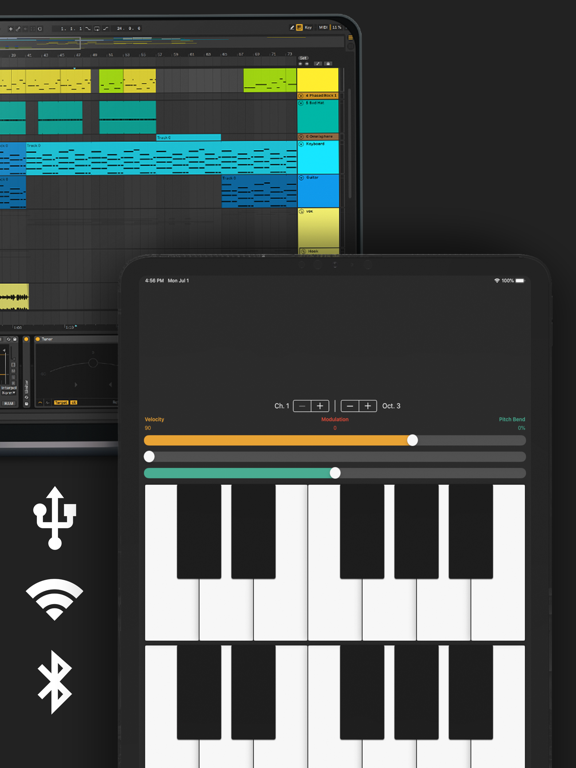
Midi Controller - Remote & USB app for iPhone and iPad
Developer: Dominik Seemayr
First release : 03 Jul 2019
App size: 15.2 Mb
MidiController turns your iPhone/iPad into a complete MIDI controller, that works over USB, WLAN or Bluetooth. No additional software needed!
Send all possible Notes, Continuous Controller / Control Change and Program Change values to the connected device.
Build your workspace from the ground up with unlimited, custom Pushes/Buttons and Sliders.
All Pushes/Buttons and Sliders are completely customisable - customize every value of every control possible and how the control behaves. You can even create dynamic controls (e.g. Program Change values that count up or down).
• Works with every macOS: From 10.5 (Leopard) up to the newest 10.15 (Catalina)
• Works on every iPhone and iPad
• Also works with external hardware (e.g. synths,...) that supports Apple (CoreMidi)
• If your hardware/PC does not support CoreMidi, you can use an iPhone/iPad compatible MIDI-Interface as bridge to make MidiController work with ALL MIDI devices
Works with every application that supports MIDI-Input.
Example DAWs (Digital Audio Workstation):
* Logic X Pro
* Ableton Live
* Avid Pro Tools
* Propellerhead Reason
* Steinberg Cubase
* Cockos Reaper
* and many more (in principle every application that supports midi input)
** NOTES **
• MidiController does not play any sound itself, it only sends out MIDI-Information to connected devices.
• MidiController is primary created to work with macOS-Devices. If you want to use MidiController with hardware that does not support Apple CoreMidi, you might need an iPhone/iPad compatible MIDI-Interface as bridge. A MIDI interface typically connects to your iOS per lightning port and provides standard MIDI DIN ports to connect to your hardware. There are also bluetooth MIDI interfaces that connect wirelessly.
• MidiController does not receive any MIDI-Information, it generates and sends them itself depending on the user-input.



